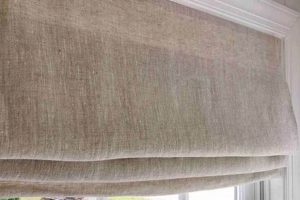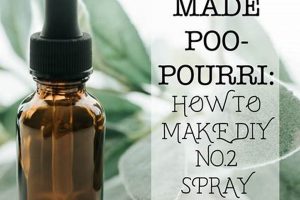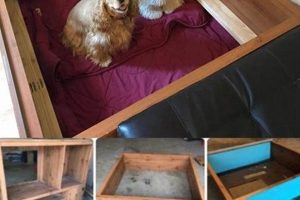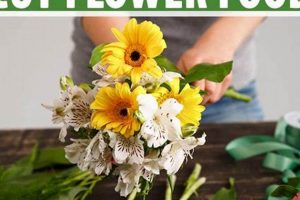A self-service floral arrangement station allows individuals to create personalized bouquets and floral designs. These stations typically involve a curated selection of fresh flowers, greenery, vases, and tools, enabling participants to express their creativity and design preferences. An example of this setup would be at a party where guests can assemble their own centerpieces or take-home gifts.
The appeal of such arrangements lies in their ability to foster engagement, personalization, and a sense of shared experience. This approach to floral design can reduce costs compared to professionally arranged flowers, while simultaneously providing a memorable activity. Historically, the concept evolved from the broader trend of interactive event elements and the increasing desire for customized experiences.
The following sections will delve into the practical aspects of setting up and maintaining a successful floral creation area, including flower selection, arrangement principles, and considerations for different events.
Essential Considerations for a Successful Floral Arrangement Station
This section outlines key considerations to maximize the impact and functionality of a floral arrangement station at any event.
Tip 1: Flower Selection is Paramount. Prioritize seasonal blooms and a diverse color palette to cater to varying preferences. Ensure the selected flowers are fresh and hydrated upon delivery.
Tip 2: Greenery Provides Structure and Texture. Incorporate various types of foliage, such as eucalyptus, ferns, or ruscus, to add visual interest and support the floral arrangements’ stability.
Tip 3: Vase Variety Enhances Customization. Offer an assortment of vase shapes and sizes to accommodate different bouquet styles and quantities of flowers. Consider providing both clear glass and opaque ceramic options.
Tip 4: Essential Tools Streamline the Process. Provide sharp floral shears or knives, along with floral tape and wire, to enable participants to cut stems to the appropriate length and secure their arrangements effectively.
Tip 5: Water and Hydration are Critical. Keep flowers properly hydrated by providing clean water in buckets or containers. Instruct participants to change the water regularly and trim stem ends at an angle to maximize water absorption.
Tip 6: Display and Presentation Matter. Organize the flowers, greenery, vases, and tools in an aesthetically pleasing and easily accessible manner. Consider using tiered displays or risers to create visual interest and prevent overcrowding.
These considerations aim to improve the station’s functionality and visual appeal. By addressing these factors, event organizers can ensure a positive and memorable experience for all participants.
With these tips in mind, one can proceed to adapt the station to specific event themes and budgets.
1. Floral Variety
Floral variety is a cornerstone of a successful self-service floral arrangement station. A limited selection restricts creative expression and diminishes the interactive experience. The absence of diverse colors, shapes, and textures directly impacts the range of possible bouquet designs, potentially leading to participant dissatisfaction. For example, a station offering only roses in a single color would severely limit design options compared to a station featuring roses, lilies, carnations, and various greenery in multiple hues.
The importance of floral variety extends beyond mere aesthetics. Different flower types possess varying levels of durability and suitability for specific arrangement styles. Incorporating robust flowers alongside delicate blooms allows participants to create arrangements that are both visually appealing and long-lasting. Furthermore, a wider selection accommodates diverse skill levels, enabling both novice and experienced arrangers to find suitable materials. The practical application of this understanding is evident in well-stocked floral supply stores, which offer an extensive array of choices to cater to a wide range of customer preferences and design goals.
In conclusion, prioritizing floral variety is not simply about offering options; it is about fostering creativity, ensuring arrangement longevity, and accommodating diverse skill levels. Overlooking this aspect undermines the core purpose of a self-service station. Addressing the challenges of sourcing and maintaining a diverse selection is paramount to the overall success and appeal of the experience.
2. Vessel Selection
Vessel selection constitutes an integral component of a successful floral arrangement station. The chosen container directly influences the aesthetic appeal, stability, and overall presentation of the final arrangement. A mismatch between floral style and container type can detract from the intended design and undermine the interactive experience.
- Shape and Style Complementarity
The shape and style of the vessel must complement the chosen flowers. For example, tall, slender vases are suitable for elongated flowers like gladioli, while wider, more rounded containers are better suited for fuller bouquets featuring roses or peonies. A rustic arrangement may benefit from a ceramic or earthenware vessel, while a modern design might call for sleek glass or metal. The selection must harmonize with the overall aesthetic vision.
- Stability and Functionality
The vessel must provide adequate stability to support the arrangement. A top-heavy bouquet placed in a lightweight or narrow-based vase is prone to toppling, leading to damage and frustration. The container should also be watertight and of sufficient depth to provide adequate hydration to the flowers. Functionality considerations include ease of handling and cleaning.
- Material and Texture Considerations
The material and texture of the vessel contribute to the overall visual impact. Clear glass allows the stems and water to be visible, which can be aesthetically pleasing in some arrangements but may require more meticulous stem preparation. Opaque materials conceal the stems and can create a more polished look. Texture adds another layer of interest, with options ranging from smooth, glossy surfaces to rough, matte finishes.
- Size and Proportionality
The size of the vessel should be proportional to the size of the floral arrangement. A small bouquet placed in an oversized vase will appear dwarfed, while a large, overflowing arrangement in a tiny container will look unbalanced and potentially unstable. Careful consideration of scale is essential for achieving a visually harmonious composition.
In summation, appropriate vessel selection extends beyond mere containment; it is a critical design element that shapes the final presentation and functionality of the self-created floral arrangements. The interplay between shape, style, stabil
ity, material, and size significantly impacts the overall success and aesthetic appeal of the floral arrangement station experience. Careful attention to these factors enhances participant satisfaction and elevates the final product.
3. Tool Availability
Tool availability is a critical determinant of the success of a DIY flower bar. The absence of appropriate tools directly inhibits participants’ ability to effectively cut, shape, and secure floral arrangements, thereby diminishing the intended interactive experience. Floral shears, wire cutters, floral tape, and stem strippers are not merely accessories but essential instruments for manipulating plant material into desired forms. For example, attempting to cut thick flower stems with household scissors results in crushed stems, reduced water uptake, and a shortened lifespan for the arrangement. Similarly, neglecting to provide floral tape limits the ability to create stable, aesthetically pleasing designs.
The practical significance of tool availability extends beyond basic functionality. The provision of high-quality, well-maintained tools enhances the overall perception of the flower bar, signaling a commitment to participant satisfaction. Dull shears or a lack of stem strippers can quickly lead to frustration and a sense of inadequacy, undermining the creative process. Consider a wedding floral arrangement area: equipping it with professional-grade shears and a variety of floral wires enables guests to craft intricate corsages and boutonnieres, elevating the experience beyond simple bouquet assembly. This attention to detail contributes significantly to the event’s overall success.
In summation, adequate tool availability is not simply a matter of convenience; it is a fundamental requirement for enabling participants to fully realize their creative potential within a DIY flower bar setting. Addressing this aspect requires careful consideration of tool quality, variety, and maintenance. By prioritizing tool availability, organizers ensure a more rewarding, productive, and ultimately, successful, floral arrangement experience for all involved. Failure to do so undermines the core value proposition of the station.
4. Hydration Practices
Effective hydration practices are paramount to the viability and aesthetic appeal of any self-service floral arrangement station. The longevity and vibrancy of cut flowers are directly contingent upon consistent and appropriate water management. Inadequate hydration leads to premature wilting, discoloration, and a diminished experience for participants.
- Initial Hydration and Processing
Upon arrival, flowers require immediate hydration. Stems should be recut at an angle underwater to prevent air bubbles from blocking water uptake. Flowers should then be placed in a clean container filled with water and floral preservative. This initial step maximizes water absorption and helps to extend the flowers’ lifespan. This is relevant in a DIY environment because it ensures fresh, appealing materials.
- Water Quality and Additives
Water quality significantly impacts flower longevity. Clean, cool water is essential. Floral preservatives, containing sugars and biocides, nourish the flowers and inhibit bacterial growth. The use of unfiltered tap water, containing high levels of chlorine or other minerals, can be detrimental. Consistent use of appropriate water solutions can extend freshness in DIY stations.
- Stem Care and Maintenance
Regular stem maintenance is critical. Removing leaves below the waterline prevents bacterial contamination and improves water uptake. Periodic recutting of stems, even during the event, helps to maintain hydration. Neglecting this process leads to clogged stems and reduced water absorption, quickly diminishing the flowers’ appearance and longevity in the display setting.
- Environmental Conditions
Environmental conditions, such as temperature and humidity, influence water loss. High temperatures and low humidity accelerate transpiration, requiring more frequent water replenishment. Conversely, cooler temperatures and higher humidity levels reduce water loss. Placement of the DIY flower bar in a cool, shaded area minimizes water stress and extends the freshness of the floral material.
In summary, maintaining rigorous hydration practices is not merely an operational detail; it is a fundamental aspect of ensuring the success and appeal of a self-service floral arrangement station. From initial processing to ongoing maintenance and environmental management, each element contributes to the overall quality and longevity of the floral material, directly impacting the participant experience. Ignoring these considerations leads to a substandard experience and premature flower degradation, undermining the station’s purpose.
5. Workspace Layout
The spatial arrangement directly impacts the usability and efficiency of a DIY flower bar. A disorganized layout can impede workflow, reduce participant engagement, and detract from the overall experience. Adequate space for movement, clearly defined zones for different activities (cutting, arranging, wrapping), and accessible placement of materials are critical for a functional workspace. For example, a cramped station with limited surface area can lead to overcrowding, making it difficult for participants to select flowers and create arrangements comfortably. In contrast, a well-designed layout facilitates a smooth and enjoyable process, enhancing the creative output.
A functional layout addresses several key elements: sufficient lighting to accurately perceive colors and textures; accessible placement of essential tools and materials to minimize unnecessary reaching or movement; and adequate waste disposal options to maintain cleanliness. Consider a high-volume event such as a corporate team-building exercise. A layout with multiple workstations, each equipped with individual tool sets and water sources, streamlines the arrangement process and prevents bottlenecks. The absence of these elements can significantly reduce throughput and negatively impact participant satisfaction.
Ultimately, the workspace layout is not merely a logistical consideration; it is a critical component that shapes the participant experience and influences the quality of the floral arrangements produced. By prioritizing efficient spatial planning and accessible resource allocation, organizers enhance the usability, enjoyment, and overall success of the DIY flower bar. Poor layout design represents a significant obstacle to a positive and productive creative environment.
6. Budget Allocation
Budget allocation is a foundational element of any self-service floral arrangement station, directly influencing the quality, variety, and overall scale of the offering. The financial resources dedicated to the project determine the types of flowers available, the range of vessels provided, the quality of tools offe
red, and the level of support personnel present. A limited budget necessitates compromises, potentially resulting in a smaller selection of less expensive flowers, basic containers, and minimal assistance. Conversely, a more substantial budget allows for premium floral varieties, a diverse range of aesthetically pleasing vessels, high-quality tools, and dedicated staff to assist participants.
The consequences of inadequate budget allocation are readily apparent. A station with insufficient funding may feature wilted or damaged flowers, a lack of essential tools, and an unappealing presentation, deterring participants and undermining the intended experience. Conversely, a well-funded station can elevate the event, providing a memorable and engaging activity. For instance, consider two wedding receptions: one with a meager floral budget results in a sparse, uninspired station, while the other, with a generous allocation, features a lush display of exotic blooms, artisan vases, and personalized assistance, enhancing the overall ambiance of the celebration.
In summary, budget allocation serves as the cornerstone for the success or failure of a self-service floral arrangement station. It dictates the available resources, shapes the participant experience, and ultimately determines the value derived from the activity. Recognizing this fundamental connection is crucial for event planners and organizers seeking to create a memorable and impactful event. Without appropriate financial commitment, the potential benefits of the floral arrangement area remain unrealized.
Frequently Asked Questions
This section addresses common inquiries and misconceptions regarding the establishment and operation of self-service floral arrangement stations.
Question 1: What is the optimal number of flower varieties to offer at a “diy flower bar?”
The optimal number depends on budget and space constraints. However, a minimum of five distinct floral types, complemented by at least three greenery options, is recommended to provide sufficient creative latitude.
Question 2: What types of vessels are most suitable for a “diy flower bar?”
A selection of clear glass vases in varying shapes and sizes, alongside a few opaque ceramic or metallic containers, provides versatility. Ensure stability and appropriate water capacity for all vessels.
Question 3: What essential tools must be provided at a “diy flower bar?”
Sharp floral shears or knives, floral tape, floral wire (various gauges), and stem strippers are indispensable. Provision of gloves is advisable to protect hands from thorns and sap.
Question 4: How can flower freshness be maintained throughout a “diy flower bar” event?
Recut stems at an angle upon arrival, utilize floral preservatives in the water, remove foliage below the waterline, and store flowers in a cool, shaded area away from direct sunlight or heat sources. Replenish water regularly.
Question 5: What are the key considerations for designing an efficient “diy flower bar” layout?
Ensure adequate workspace per participant, clear delineation of zones for flower selection, arranging, and wrapping, and accessible placement of tools and materials. Prioritize a logical flow to prevent congestion.
Question 6: How much should be allocated to the “diy flower bar” budget?
The budget is contingent upon the desired quality and scale of the station. As a general guideline, allocate at least 10-15% of the overall event budget to ensure a well-stocked and visually appealing arrangement station.
These FAQs provide a foundational understanding of key considerations for establishing a successful floral arrangement station. Careful planning and attention to detail are essential for maximizing the value and enjoyment derived from this activity.
The subsequent section will explore advanced techniques for enhancing the aesthetic appeal and participant engagement.
Conclusion
The preceding analysis explored the multifaceted aspects of a self-service floral arrangement station. It underscored the importance of flower selection, vessel considerations, tool availability, hydration practices, workspace layout, and budget allocation as critical factors influencing the success and overall impact of such an endeavor. Each element contributes significantly to the participant experience and the quality of the final product.
Effective implementation of these principles can elevate a simple gathering into a memorable and engaging event. Strategic planning and diligent execution are essential to realizing the full potential of a floral arrangement station, providing attendees with a unique opportunity for creative expression and personalized keepsakes. Future events will benefit from a continued focus on optimizing these key elements for enhanced participant satisfaction.







